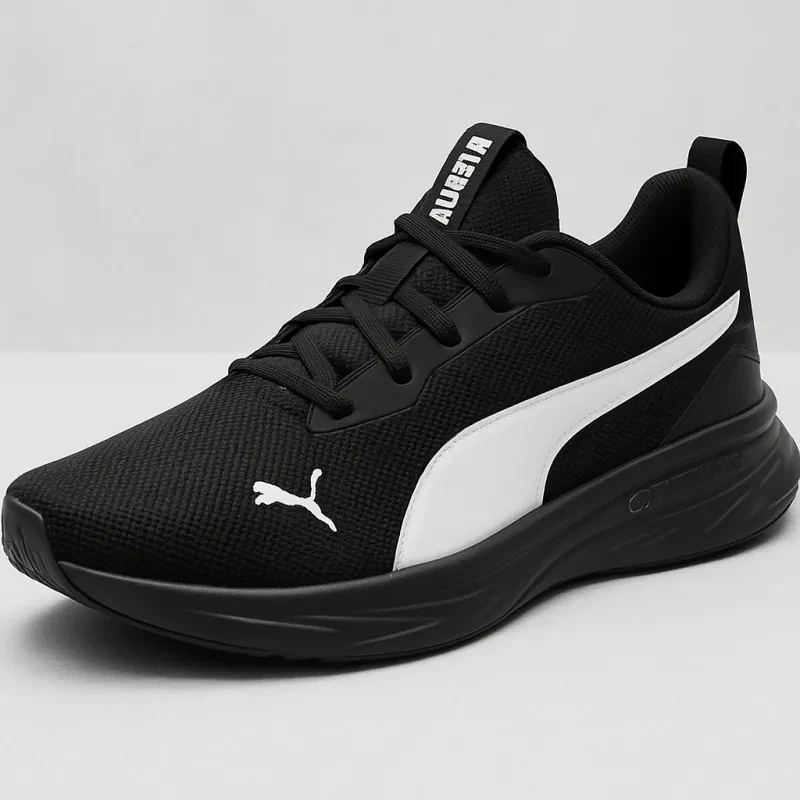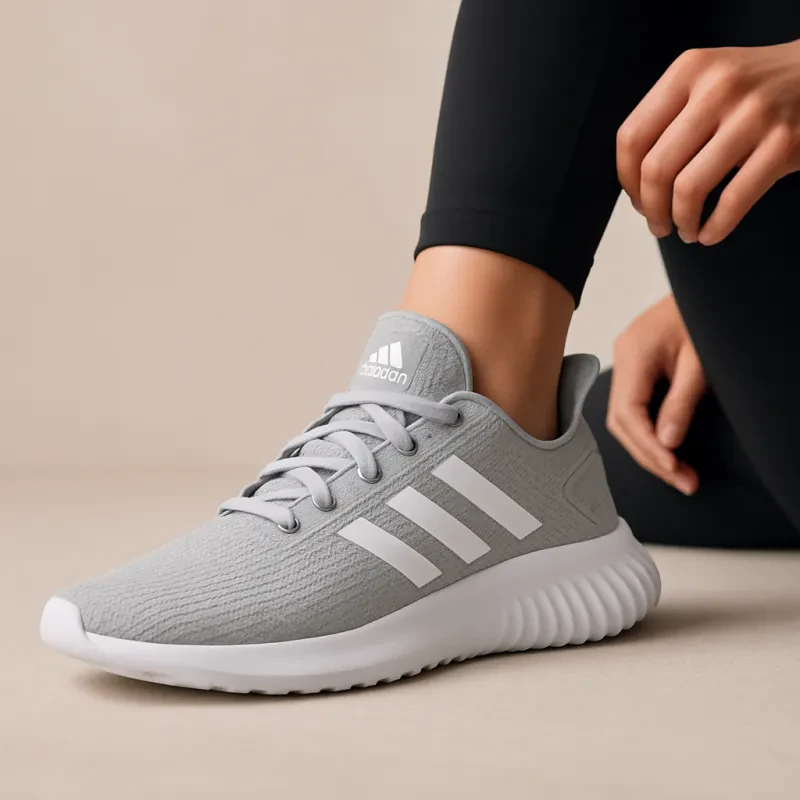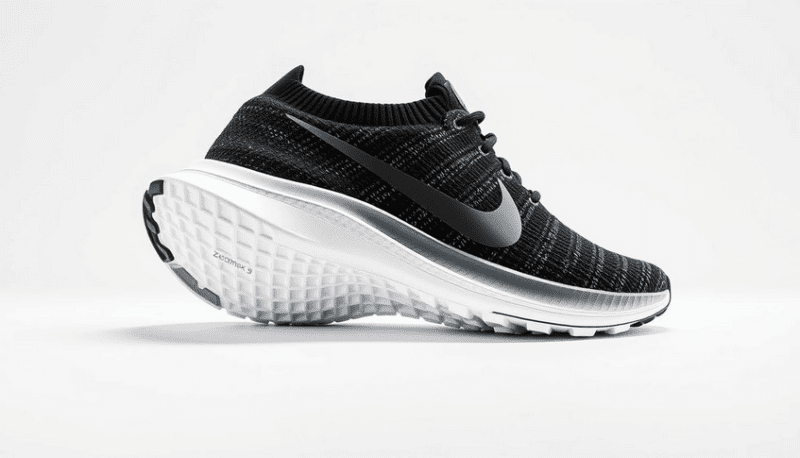Welcome to my beginner's guide to 5K running in 2023! Whether you're new to running or looking to set a new challenge for yourself, this guide is designed to help you achieve your goals. With a detailed 5K training plan, tips for beginner runners, and information on beginner-friendly races, you'll be well-prepared to tackle the 5K distance with confidence.
Starting a running journey can be both exciting and intimidating, but with the right approach and guidance, anyone can become a 5K runner. So, let's lace up our shoes and get started on this incredible journey!

Key Takeaways:
- Follow a structured 5K training plan to gradually build up your running endurance.
- Don't forget to incorporate rest days into your training schedule to allow your body to recover and prevent injuries.
- Invest in a good pair of running shoes that provide proper support and cushioning.
- Stay motivated by setting achievable goals and participating in beginner-friendly 5K races.
- Remember that progress takes time, so be patient and enjoy the process of becoming a stronger and more confident runner.
The History of the Couch to 5K Plan
Running a 5K race can be a daunting task for beginners, but thanks to the Couch to 5K program, it has become more accessible than ever before. Developed in the mid-1990s by Josh Clark, the program was initially created to help his mother transition from a sedentary lifestyle to running. Little did he know that his simple plan would go on to revolutionize the way beginners train for and conquer a 5K race.
The Couch to 5K program follows a gradual progression, starting with a combination of walking and running intervals and incrementally increasing the running time while reducing the walking time. This approach allows beginners to build up their endurance and stamina over time, without pushing their bodies too hard too soon. The program typically spans 9 weeks, with participants running three times a week.
What sets the Couch to 5K program apart is its emphasis on sustainability and gradual improvement. By focusing on consistency and incremental progress, beginners can avoid injury and burnout, ensuring that running becomes an enjoyable and sustainable habit. The program's popularity skyrocketed as word spread about its effectiveness, and it quickly became a go-to training method for aspiring runners worldwide.
"The Couch to 5K program was a game-changer for me. It provided a structured plan that took the intimidation out of running and made it manageable for someone like me who had never run before. I was able to build up my endurance and confidence over time, and eventually completed my first 5K race. I couldn't have done it without this program." - Sarah, Couch to 5K graduate
Why is the Couch to 5K program beginner-friendly?
The Couch to 5K program has gained popularity for several reasons, making it an ideal choice for beginners looking to start their running journey:
- Gradual Progression: The program gradually increases running time while incorporating walk breaks, allowing beginners to build endurance at their own pace.
- Structured Plan: The program provides a clear outline of what to do each week, eliminating the guesswork and keeping beginners motivated and accountable.
- Flexibility: The Couch to 5K program can be easily adapted to fit individual schedules and fitness levels, making it suitable for people of all ages and abilities.
- Community and Support: Many online communities and running groups offer support and encouragement to individuals following the Couch to 5K program, creating a sense of camaraderie and motivation.
| Week | Workout | Duration |
|---|---|---|
| 1 | Brisk five-minute warmup walk. Alternate between 60 seconds of jogging and 90 seconds of walking for a total of 20 minutes. | 20 minutes |
| 2 | Brisk five-minute warmup walk. Alternate between 90 seconds of jogging and two minutes of walking for a total of 20 minutes. | 20 minutes |
| 3 | Brisk five-minute warmup walk. Alternate between 90 seconds of jogging, 90 seconds of walking, three minutes of jogging, and three minutes of walking for a total of 25 minutes. | 25 minutes |
| 4 | Brisk five-minute warmup walk. Alternate between three minutes of jogging and 90 seconds of walking for a total of 25 minutes. | 25 minutes |
The Couch to 5K program has helped countless beginners transform from sedentary individuals to confident runners. Whether you're looking to improve your fitness, lose weight, or simply challenge yourself, this program provides a structured and achievable roadmap to tackle your first 5K race. So lace up your running shoes, follow the plan, and watch as you gradually cross the finish line with pride.
Building Up to Running 5K
When starting your journey to becoming a 5K runner, it's important to build up your endurance gradually. This will help prevent injuries and allow your body to adapt to the new physical demands.
Beginner running plans are designed to safely and manageably transition from walking to running a 5K. These plans typically involve running and walking intervals, gradually increasing the running time while incorporating walk breaks to rest and recover.
One common approach is the run/walk method, where you alternate between running and walking for specific intervals. For example, you might start with a ratio of 1 minute of running followed by 2 minutes of walking and then gradually increase the running time while decreasing the walking time.
Setting achievable goals is also crucial when preparing to run a 5K. Start with small milestones, such as running for 5 minutes without stopping, and gradually increase the duration as you feel more comfortable. Remember, progress takes time, so be patient with yourself and celebrate each milestone.
Finding Beginner-Friendly Races
Participating in a beginner-friendly 5K race can provide a supportive and encouraging environment. These races are specifically designed for first-time runners and often have a more relaxed atmosphere than larger events.
Look for races explicitly mentioning beginner-friendly or welcoming to all fitness levels. These races may offer additional support, such as on-course guidance, water stations, and a slower pace for beginners. It can be helpful to read reviews or reach out to other runners who have participated in the race to understand what to expect.
Remember, the most important aspect of running a 5K is enjoying the process and embracing the journey. Building up to running a 5K takes time and dedication, but with the right mindset and training plan, you can accomplish your goals and experience the joy of crossing that finish line.
Running Gear and Shoes for Beginners
When starting your running journey, having the right gear and shoes to support you every step of the way is important. Investing in quality running gear enhances your comfort and helps prevent injuries. Here are some essential running gear and shoe recommendations for beginners:
Running Shoes
Choosing the right pair of running shoes is crucial for a comfortable and injury-free running experience. Look for shoes that offer proper support, cushioning, and stability. Visit a specialty running store for a professional fitting and analysis of your foot type and gait. This will ensure that you find the perfect shoes to suit your individual needs.
Some popular shoe brands for beginner runners include:
- Nike
- Adidas
- New Balance
- Brooks
Remember to replace your running shoes every 300-500 miles or as soon as you notice any signs of wear and tear.
Running Apparel
While you don't need fancy or expensive clothing to start running, there are a few key items that can enhance your comfort and performance:
- Moisture-wicking shirts and shorts to keep you dry and comfortable
- A supportive sports bra for women
- Compression socks or calf sleeves to improve circulation and reduce muscle fatigue
- A lightweight, breathable hat or visor to protect your face from the sun
- Reflective gear for visibility during low-light conditions
Remember to dress appropriately for the weather conditions, layering up in colder temperatures and opting for lightweight, breathable fabrics in hot weather.
Other Essentials
In addition to shoes and apparel, there are a few other running essentials that can make your runs more enjoyable:
- A comfortable, moisture-wicking sock
- A running watch or fitness tracker to track your progress
- A running belt or armband to carry your phone and other essentials
- A foam roller or massage ball for post-run recovery
Having the right gear and shoes will not only improve your running experience but also help you stay motivated and committed to your training. Remember, as a beginner, it's important to start slow, listen to your body, and gradually increase your mileage to avoid injury.
Training and Stretching Tips for Beginners
When it comes to training for a 5K as a beginner, it's important to start slowly and gradually increase your running distance and intensity. Incorporating a combination of running and walking intervals into your workouts can help build endurance and reduce the risk of injury. For example, you can start by running for one minute and then walking for two minutes, repeating this cycle for the duration of your workout. As your fitness improves, you can gradually increase the amount of time you spend running and decrease the time spent walking.
In addition to running, it's beneficial to incorporate cross-training activities into your routine. This can include activities such as cycling, swimming, or strength training, which help build overall fitness and prevent overuse injuries. Cross-training also provides variety and helps prevent boredom, keeping you motivated and engaged in your training.
"The key to running success is consistency and listening to your body. If you feel any pain or discomfort during your runs, it's important to take a break and assess the situation. Ignoring pain can lead to injury and setbacks in your training."
Stretching for Beginners
Stretching is an essential part of any running routine as it helps improve flexibility, prevent muscle imbalances, and reduce the risk of injury. As a beginner, it's important to focus on dynamic stretching before your runs and static stretching after your runs. Dynamic stretches involve active movements that warm up the muscles and prepare them for activity. Examples of dynamic stretches include leg swings, walking lunges, and high knees. On the other hand, static stretches involve holding a stretch for a prolonged period, typically around 30 seconds, to improve muscle flexibility and promote recovery.
A proper post-run stretching routine should target the major muscle groups used in running, such as the calves, quadriceps, hamstrings, and hip flexors. This can help alleviate muscle soreness and tightness, allowing for faster recovery and better performance in your next workout. Remember to breathe deeply and relax into each stretch, avoiding any bouncing or jerking movements that can lead to injury.
| Training Tips for Beginners | Stretching Tips for Beginners |
|---|---|
|
|
By following these training and stretching tips, beginner runners can build a solid foundation and safely progress towards their 5K goals. Remember to listen to your body, stay consistent, and enjoy the journey! With dedication and perseverance, you'll be crossing that finish line with confidence.
Nutrition and Hydration for Beginner Runners
As a beginner runner, fueling your body properly and staying hydrated to support your running performance and overall health is important. Attention to nutrition and hydration can enhance your training and help you reach your 5K running goals. Here are some essential tips to keep in mind:
1. Fuel Your Body with a Balanced Diet
Proper nutrition plays a crucial role in providing energy for your runs and aiding in recovery. Aim for a balanced diet that includes a variety of fruits, vegetables, whole grains, lean proteins, and healthy fats. Prioritize nutrient-dense foods that provide essential vitamins and minerals to support your running journey.
2. Focus on Protein and Carbohydrates
Protein is essential for muscle repair and recovery. Include lean protein sources like chicken, fish, eggs, and beans in your meals and snacks. Carbohydrates are a primary fuel source for runners, so include complex carbohydrates like whole grains, sweet potatoes, and fruits in your diet.
3. Hydrate Before, During, and After Your Runs
Staying hydrated is crucial for optimal performance and to prevent dehydration. Drink water before, during, and after your runs to replenish fluids lost through sweat. If running for longer durations or in hot weather, consider using a sports drink to replace electrolytes.
| Signs of Dehydration | Signs of Proper Hydration |
|---|---|
| Dry mouth and throat | Mildly pale urine |
| Headache and dizziness | Clear to light yellow urine |
| Decreased sweat production | No thirst sensation |
| Muscle cramps | Normal body temperature |
4. Experiment with Caffeine for Energy
Caffeine is a stimulant that can improve endurance and mental focus. Before a run, consider having a cup of coffee or tea to boost your energy. However, it's important to note that caffeine affects individuals differently, so experiment during training to see how it impacts your performance.
You can optimize your running performance and maximize your training by prioritizing nutrition and hydration. Listen to your body, experiment with different strategies, and find what works best. Stay fueled and hydrated, and enjoy your journey as a beginner runner!
Your Beginner 5K Training Plan
Welcome to your personalized beginner 5K training plan! Over the next six weeks, we will gradually increase your running time and build your endurance to help you confidently complete a 5K race. Remember, consistency and patience are key, so let's get started!
Week 1
In the first week, we will focus on alternating between walking and running to ease you into the training plan. Here's your schedule:
- Day 1: Walk for 5 minutes, then run for 1 minute. Repeat this cycle 5 times.
- Day 2: Rest day.
- Day 3: Walk for 5 minutes, then run for 1 minute. Repeat this cycle 6 times.
- Day 4: Rest day.
- Day 5: Walk for 5 minutes, then run for 1 minute. Repeat this cycle 7 times.
- Day 6: Rest day.
- Day 7: Walk for 5 minutes, then run for 1 minute. Repeat this cycle 8 times.
Week 2
During week 2, we will gradually increase the running time and decrease the walking intervals. Here's your updated schedule:
- Day 1: Walk for 5 minutes, then run for 2 minutes. Repeat this cycle 4 times.
- Day 2: Rest day.
- Day 3: Walk for 5 minutes, then run for 2 minutes. Repeat this cycle 5 times.
- Day 4: Rest day.
- Day 5: Walk for 5 minutes, then run for 2 minutes. Repeat this cycle 6 times.
- Day 6: Rest day.
- Day 7: Walk for 5 minutes, then run for 2 minutes. Repeat this cycle 7 times.
Week 3
In week 3, we will continue building your running endurance by increasing the running time and reducing the walking breaks. Here's your updated schedule:
- Day 1: Walk for 5 minutes, then run for 3 minutes. Repeat this cycle 4 times.
- Day 2: Rest day.
- Day 3: Walk for 5 minutes, then run for 3 minutes. Repeat this cycle 5 times.
- Day 4: Rest day.
- Day 5: Walk for 5 minutes, then run for 3 minutes. Repeat this cycle 6 times.
- Day 6: Rest day.
- Day 7: Walk for 5 minutes, then run for 3 minutes. Repeat this cycle 7 times.
Week 4
During week 4, we will increase the running intervals to improve your endurance further. Here's your updated schedule:
- Day 1: Walk for 5 minutes, then run for 4 minutes. Repeat this cycle 3 times.
- Day 2: Rest day.
- Day 3: Walk for 5 minutes, then run for 4 minutes. Repeat this cycle 4 times.
- Day 4: Rest day.
- Day 5: Walk for 5 minutes, then run for 4 minutes. Repeat this cycle 5 times.
- Day 6: Rest day.
- Day 7: Walk for 5 minutes, then run for 4 minutes. Repeat this cycle 6 times.
Week 5
As you enter week 5, your running intervals will increase, challenging your endurance even more. Here's your updated schedule:
- Day 1: Walk for 5 minutes, then run for 5 minutes. Repeat this cycle 4 times.
- Day 2: Rest day.
- Day 3: Walk for 5 minutes, then run for 6 minutes. Repeat this cycle 3 times.
- Day 4: Rest day.
- Day 5: Walk for 5 minutes, then run for 7 minutes. Repeat this cycle 3 times.
- Day 6: Rest day.
- Day 7: Walk for 5 minutes, then run for 8 minutes. Repeat this cycle 3 times.
Week 6
Congratulations, you're in the final week of your training plan! This week, we will push your limits and prepare you for your 5K race. Here's your schedule:
- Day 1: Walk for 5 minutes, then run for 10 minutes. Repeat this cycle 3 times.
- Day 2: Rest day.
- Day 3: Walk for 5 minutes, then run for 12 minutes. Repeat this cycle 2 times.
- Day 4: Rest day.
- Day 5: Walk for 5 minutes, then run for 15 minutes. Repeat this cycle 2 times.
- Day 6: Rest day.
- Day 7: Race day! Follow the official race schedule and have fun!
Congratulations! You have completed your beginner 5K training plan. Listen to your body, stay hydrated, and have fun during your race. Enjoy the experience and celebrate your achievement. Good luck!
What to Expect on Race Day
Preparing for your first 5K race can be both exciting and nerve-wracking. As you approach the big day, it's natural to feel a mix of emotions. Here's a breakdown of what to expect on race day to help calm your nerves and ensure a smooth race experience.
The Morning of the Race
On the morning of the race, give yourself enough time to wake up, eat a light and nutritious breakfast, and use the bathroom. Arrive at the race venue at least an hour before the start time to allow for parking and check-in. This will also give you time to warm up and mentally prepare for the run ahead.
Remember, the goal of your first 5K race is to have fun and finish strong. Don't put too much pressure on yourself and enjoy the experience.
The Start Line
As you approach the start line, take a few deep breaths and find your spot in the crowd. Start lines can be crowded, so be prepared for some jostling as runners find their position. Listen to the race officials for any important announcements and follow their instructions.
The Race Itself
Once the race begins, focus on finding a comfortable pace. Don't worry about trying to keep up with other runners—run at a pace that feels sustainable for you. Take walk breaks if needed, especially if you've been training with a run/walk method. Remember to stay hydrated by taking advantage of water stations along the course.
As you approach the finish line, gather all your remaining energy and give it your final push. The exhilaration of crossing the finish line will be a moment to remember. Cherish the accomplishment and celebrate your hard work.
Now that you know what to expect on race day, you can approach your first 5K with confidence. Trust in your training, enjoy the experience, and savor every step of your journey as a beginner runner.
Conclusion
Starting a 5K training plan can be exciting and challenging for a beginner runner. In this beginner runner's guide, I've provided valuable information and tips to help you embark on your journey towards becoming a 5K runner.
Remember, starting any new training program takes time and dedication. Be patient with yourself and enjoy the process of gradually building up your endurance and improving your running skills. The key is to stay consistent and listen to your body.
Throughout this guide, we've emphasized the importance of a beginner-friendly 5K training plan. Following the six-week plan outlined in section 7, you can gradually increase your running time and build the necessary stamina for your first 5K race.
So lace up your shoes, set your goals, and get ready to conquer the 5K distance. With the knowledge and confidence gained from this guide, you're well-equipped to start your training journey. Remember, every step you take is closer to becoming a stronger and more confident runner. Good luck!
FAQ
What is the Couch to 5K training plan?
The Couch to 5K training plan is a beginner-friendly program designed to help individuals gradually build up their running endurance and prepare for a 5K race. It involves a combination of walking and running intervals that gradually increase in duration over several weeks.
How long does it take to complete the Couch to 5K program?
The Couch to 5K program typically lasts around nine weeks, but the duration can vary depending on individual progress and fitness levels. It's important to listen to your body and repeat weeks if needed before progressing to the next stage of the training plan.
Do I need any special equipment to start running?
While running doesn't require a lot of specialized equipment, investing in a good pair of running shoes is essential to prevent injuries and provide proper support. It's also helpful to wear comfortable, moisture-wicking clothing and consider accessories like a running belt or armband for carrying essentials.
How often should I run when following a beginner 5K training plan?
The frequency of your runs will depend on your fitness level and the specific training plan you choose. However, most beginner 5K training plans recommend running three to four times per week, with rest days in between to allow your body to recover and adapt to the new demands.
Should I stretch before or after running?
It's generally recommended to perform dynamic stretches before your run to warm up the muscles and increase flexibility. After your run, incorporating static stretches can help with recovery and prevent muscle soreness. Remember to listen to your body and adjust your stretching routine based on personal needs.
How should I fuel my body for running?
To fuel your body for running, it's important to maintain a balanced diet that includes a combination of carbohydrates, protein, and healthy fats. Carbohydrates provide the energy needed for running, while protein supports muscle repair and recovery. Hydration is also crucial, so drink enough water throughout the day and during your runs.
What should I expect on race day?
On race day, you can expect a mix of excitement and perhaps some nervousness. It's important to arrive early to familiarize yourself with the race course and take care of any last-minute preparations. Pace yourself during the race, listen to your body, and remember to enjoy the experience and celebrate your achievement!
Recent Featured Articles:
"Pickleball 101: A Beginner's Guide to the Sport"
Revive Your Sneakers: The Ultimate Shoe Laces Cleaning Guide





